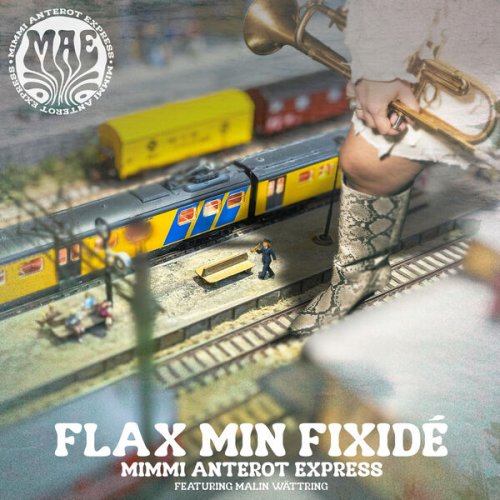Stéphanie Paulet, Elisabeth Geiger - Minoritenkonvent - Manuscript XIV 726 (Vienna, Praha, Kroměříž, 1700) (2015) [Hi-Res]

Artist: Stéphanie Paulet, Elisabeth Geiger
Title: Minoritenkonvent - Manuscript XIV 726 (Vienna, Praha, Kroměříž, 1700)
Year Of Release: 2015
Label: Muso
Genre: Classical
Quality: flac 24bits - 96.0kHz
Total Time: 01:12:31
Total Size: 1.36 gb
WebSite: Album Preview
TracklistTitle: Minoritenkonvent - Manuscript XIV 726 (Vienna, Praha, Kroměříž, 1700)
Year Of Release: 2015
Label: Muso
Genre: Classical
Quality: flac 24bits - 96.0kHz
Total Time: 01:12:31
Total Size: 1.36 gb
WebSite: Album Preview
01. Minoritenkonvent, Manuscript XIV 726: No. 84, Sonata in E Major & No. 77, Sonata in A Major
02. Minoritenkonvent, Manuscript XIV 726: No. 87, Sonata in F Minor
03. Minoritenkonvent, Manuscript XIV 726: No. 4, Sonata in D Major
04. Minoritenkonvent, Manuscript XIV 726: No. 90, Sonata in A Minor
05. Minoritenkonvent, Manuscript XIV 726: No. 75, Sonata in C Minor
06. Minoritenkonvent, Manuscript XIV 726: No. 70, Sonata in B Minor
07. Minoritenkonvent, Manuscript XIV 726: No. 2, Sonata in E Major
08. Minoritenkonvent, Manuscript XIV 726: No. 11, Sonata in E Minor
09. Minoritenkonvent, Manuscript XIV 726: No. 94, Toccata in A Minor & No. 88, Sonata in D Minor
![Stéphanie Paulet, Elisabeth Geiger - Minoritenkonvent - Manuscript XIV 726 (Vienna, Praha, Kroměříž, 1700) (2015) [Hi-Res]](https://www.dibpic.com/uploads/posts/2021-04/1617540700__se_9322323430.jpg)
The Manuscript XIV 726 of the Convent of the Minorites in Vienna has been known to musicologists for many years. It reveals flourishing violin activity from the late 17th century, to the North of the Alps, and its most celebrated representative was unquestionably Biber. In this crucial period, a school of instrument-making evolved with the local sonata style, independently of what was taking place in Italy. The opposition of the musicians of court and city gave rise to keen rivalry between them, on account of the regular competitions for their positions. The sonatas performed here are thus highly advanced as regards violin technique of the time; the works are virtuosic, many passages are written as improvised preludes. Everything is written down, yet in the style of an improvisation. Although the Manuscript includes a great number of them, only two sonatas on this disc are written in scordatura, a violin technique considered typically German and consisting of modifying the violin s tuning - G D A E - and proposing new tuning for each of the sonatas. This can create an extravert character and reinforce a spirit of dance (Faber s sonata), or create a darker, melancholic tone-colour, with a veiled, less resonant sound, as with Vojta. As nothing was indicated for the instrumentation it called for a continuo that was varied in regard to tone-colour and dynamics, capable of moving from the intimate to the majestic. The organ used is the only positive (i.e. placed on the floor, unlike organs in lofts) of the organ builder André Silbermann that still exists, restored in 2011 to its original condition and possessing an exceptional sound. After a first disc devoted to Guillemain, MU004, released in 2012, Stéphanie Paulet, first violin of Laurence Equilbey's Insula Orchestra scores a hit with this project that reveals the flourishing violin activity in the late 17th century to the North of the Alps. Accompanied by a positive organ of exceptional sound quality, her violin sings, leaps and makes us vibrate through the aural beauty of this disc, enhanced as it is by quite simply magnificent sound engineering.
![Juan Torres Fernández - Azul Cristalino (2025) [Hi-Res] Juan Torres Fernández - Azul Cristalino (2025) [Hi-Res]](https://www.dibpic.com/uploads/posts/2025-12/1765496468_y7dxox9hmk6hb_600.jpg)

![Sam Most - But Beautiful (2025) [Hi-Res] Sam Most - But Beautiful (2025) [Hi-Res]](https://img.israbox.com/img/2025-12/12/n19esmi2zxvr716zw8citn0dv.jpg)





![Kenny Wheeler, Keith Jarrett, Dave Holland & Jack DeJohnette - Gnu High (1976/2025) [Hi-Res] Kenny Wheeler, Keith Jarrett, Dave Holland & Jack DeJohnette - Gnu High (1976/2025) [Hi-Res]](https://www.dibpic.com/uploads/posts/2025-12/1765627312_cover.jpg)